(A 2019 updated version of this article can be found here: https://www.associationmormonletters.org/2019/08/spencer-w-kimball-and-the-founding-of-the-association-for-mormon-letters/)
I was asked to be the secretary of the Association for Mormon Letters last year. There had not been anyone filling that post for a few years, and there were no records that were passed down to me. I felt a responsibility to try to get the organization back in touch with its records, so while in Utah for the AML Conference, I discovered that there are three major deposits of organization records. They are:
- Association for Mormon Letters Records, 1975-1983. Utah Historical Society. Utah State History: MSS B 47, Box 1. 8 folders. Deposited by Lavina Fielding Anderson and Linda Hatcher.
- Association for Mormon Letters Records. 20th Century Western and Mormon Manuscripts; L. Tom Perry Special Collections, Harold B. Lee Library, Brigham Young University. MSS 2205/1. 4 boxes, containing 25 folders. Records for the years 1979-2000, including the AML Newsletters, correspondence, incorporating documents and bylaws, board minutes, and emails. Deposited by John Bennion.
- Records in the possession of Darlene Young, covering the years 2004-2012.
The Founding of AML
Although Mormon literature goes back to the start of the movement, serious study of Mormon literature was beginning in the decade before AML was created. Dialogue: A Journal of Mormon Thought was founded in 1966, and it provided the first stable independent platform for Mormon literary work and criticism. Sunstone magazine joined Dialogue in 1974, and it published Mormon plays, as well as 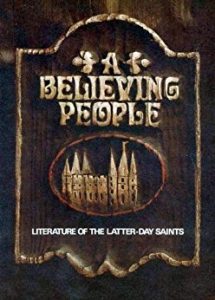 short stories and poetry. Also, in 1974 the first Mormon literature anthology, A Believing People,[1] was produced by BYU professors Richard Cracroft and Neal Lambert for the BYU Mormon Literature course. [2]
short stories and poetry. Also, in 1974 the first Mormon literature anthology, A Believing People,[1] was produced by BYU professors Richard Cracroft and Neal Lambert for the BYU Mormon Literature course. [2]
Maureen Ursenbach Beecher (1935-), a scholar then working at the LDS Historical Department in Salt Lake City, set the process in motion, when on March 11, 1976, she sent a letter to a group of friends, inviting them to a meeting at the Historical Department, in the Church Office Building.
Beecher sketched the start of AML in an introduction to the first Proceedings of the Association for Mormon Letters, which appeared in Dialogue in 1978.[3]
“Bob Rees called it a ‘summit meeting of the Mormon literati,’ the group which gathered April 20, 1976, in the conference room of the Church’s Historical Department. Actually it was just a group of people with interest in the question of the literary merit, if any, of the diaries and journals, letters and autobiographies of the Latter-day Saints. The meeting was to have lasted two hours. It was hoped that at the end of this time each participant, imbued with a sense of the importance of the material, would leave determined to study pieces of Mormon personal literature from his or her own particular point of view. But one hour into the afternoon it became apparent that there was too much to be done in the study of Mormon letters generally. Discussion of diary-as-literature broke down; instead, an organization was generated, an organization whose purpose would be to foster scholarly and creative work in Mormon letters and to promote fellowship among scholars and writers of Mormon literature. They named it the Association for Mormon Letters.”
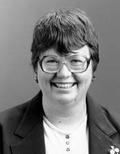
Lavina Fielding Anderson (1944-) and Eugene England (1933-2001) were also key participants in that first meeting, and would continue to be leading members of AML over the next two decades. England was then teaching at the University of Utah’s LDS Institute of Religion, and he would begin teaching at Brigham Young University in 1977. Anderson is a scholar and editor who was at that time an editor at The Ensign in Salt Lake City. She gave her recollections in a tribute she wrote about England soon after his death.[4]
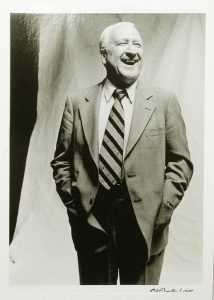
“[The] Association for Mormon letters [was] founded with the specific purpose of fostering literary criticism. Its genesis lay in a meeting which Maureen Ursenbach Beecher called among a group of friends in the fall of 1976 to discuss the quality and availability of Mormon personal narratives. Maureen was then a member of Leonard J. Arrington’s group of historians and holder of a Ph.D. in comparative literature. (Leonard not only heartily seconded Maureen’s hosting of this meeting but delivered a paper at the first meeting.) Eugene England and I were among the eight or ten people who came. Gene tossed out the question, “How could we go about organizing a group focused on the criticism of Mormon literature?” Then he patiently listened as the lively conversation ranged over the “why” and “what” aspects of the question as well for about an hour.
Obviously it was a discussion that could have gone on for years, but Gene glanced at his watch and said abruptly, “I’ve got to go. Maureen, why don’t you chair a steering committee?” Then he walked out. We dutifully shifted, on the spot, from academics to activity. Maureen chaired that steering committee, formally organized the Association for Mormon letters, and persuaded us that the name should be “for Mormon letters,” not “of Mormon letters.” She also served as its first president, with Gene and I among her successors.

While this fledgling organization was finding its wings—and imposing the deadline of an annual scholarly conference that dragged many an excellent critical idea into actual written form—Gene continued to steadily and consistently support the critical study of Mormon literature. He taught a class in Mormon literature regularly at BYU, beginning in 1977, the year after the AML’s creation. As AML president, he delivered what was unquestionably the longest presidential address in the history of the organization. He and Charlotte opened their home to readings by creative writers. He reviewed books and short story collections. In short, he put his money where his mouth was when it came to Mormon literature.”
Anderson has also written, “I was just reading in Leonard Arrington’s diary about the initial meeting, which Maureen Ursenbach Beecher and Gene England jointly called by assembling a few former English majors. The meeting was held in the History Department’s conference room and the bureaucrats had an absolute fit, terrified that somebody might think Leonard was sponsoring a new, intellectual and possibly anti-Mormon organization.”[5]
AML’s first conference was held on October 4, 1976, in the Empire Room of the Hotel Utah, Salt Lake City. The program was as follows:
Morning Session
- Leonard Arrington, “The Mormon Heritage of Vardis Fisher”
- Bruce Jorgensen, “Heritage of Hostility: The Mormon Attack on Fiction in the Nineteenth Century”
- Richard Cracroft, “Bishop Potts and Elder Dunbar: Max Adeler’s Much-Married Mormons.”
- Richard Cummings, “Tension: Mormon Literature Facing Its Time,”
Luncheon Speaker: James Arrington, “Here’s Brother Brigham” (discussion/performance)
Afternoon Session
- Davis Bitton, “Writings Engendered by the Martyrdom of Joseph Smith”
- “Being a Mormon and a Poet”: Emma Lou Thayne, Arthur Henry King, John S. Harris
Sometime before of during the first conference Maureen Ursenbach Beecher and the other founders wrote the following document:
The Association for Mormon Letters Articles of Incorporation[6]
“Article 1. In order to foster scholarly and creative work and interest in the field of Mormon letters, and to promote fellowship and communication among scholars and writers interested in Mormon literature, an international organization is hereby formed with the name, “The Association for Mormon Letters.”
Article 2. The officers of The Association for Mormon Letters shall be as follows:
- President, elected for a term of one year.
- President Elect, or first vice president, elected as vice president for one year, to serve the following year as president.
- Second Vice President, elected for one year, with the specific responsibility for program at meetings and symposia, under the direction of the president and with the consultation of the council.
- Executive Secretary-Treasurer, appointed by the president in consultation with the vice presidents and council for an unspecified period.
- Council Members, at least three, elected for alternating three year terms [. . . ]
Article 3. The officers shall be nominated by a committee selected by the president. Suggestions for nominations may be submitted to the committee by any member, and additional nominations may be made at the annual meeting.
Article 4. Annual dues shall be assessed all members, to be within a month of the annual meeting for members to remain in good standing in the Association. Amount of the dues shall be set by the presidency and council prior to the annual meeting and notification sent to the membership with the announcement of that meeting. The initial fee, 1976-1977, shall be four dollars.
Article 5. An annual meeting shall be held in the fall of each year, at the call of the officers, and members duly notified well in advance.
Article 6. The membership of the organization shall consist of persons who have paid yearly dues, either charter members who shall pay ten dollars prior to October 31, 1976, or regular members who shall pay the annual dues levied by the officers.
Article 7. Amendments to this constitution may be proposed from the floor at the annual meeting, or petitioned by five members and forwarded to the president well in advance of that meeting. Amendments receiving a majority vote at the annual meeting shall become part of the constitution.”
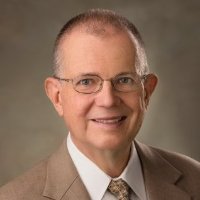
The document also had a call for papers for the second symposium, and an announcement of the AML Newsletter, to be run by Steven P. Sondrup, the executive secretary-treasurer. Sondrup, a professor of comparative literature at BYU, served executive secretary of the organization from its beginning until 1994. He also edited the annual proceedings/annual from 1980 until 1994.
Following is a list of the members of The Association for Mormon Letters as of October 4, 1976.[7]
Linda Adams, Penelope Allen, Marilyn Arnold, Stanford Andrews, Leonard Arrington, Kathryn R. Ashworth, Susan H. Aylworth, Maureen Beecher, Eloise M. Bell, Francine Bennion, Sherilyn Bennion, Davis Bitton, Mae Blanche, Wayne C. Booth, Mary Bradford, Juanita Brooks, Benita L. Brown, William and Marilyn Brown, H. E. Burnham, Scott Cameron, David Canaan, Marilyn M. Capell, Kris Cassity, Bruce B. Clark, Marden Clark, Aileen H. Clyde, William Conway, Richard Cracroft, Marshall Craig, R. J. Cummings, Kathy O. Czerny, Afton Day, Wilfried Decoo, L. V. Donaldson, R. G. Ellsworth, Eugene and Charlotte England, Ron Esplin, Lavina Fielding, Mary Firmage, Ed Geary, J. S. Harris, Linda Harris, Edward L. Hart, D. Hunter, B. S. Jacobs, Heber Jacobsen, Dorla Jenkins, Janet Jensen, L. J. Johnson, Clifton Jolley, Bruce W. Jorgensen, Eileen G. Kump, Neal Lambert, Clinton Larson, Glen Leonard, Jon C. Lloyd, A. Logie, Karen Lynn, T. E. Lyon, B. and E. McKay, F. M. McKiernan, M. R. Miller, Jill Mulvay, Christine Norman, Lena Marie Pack, Jeri Parker, Elinore Partridge, Jaynann M. Payne, Virginia Pearce, M. D. Pederson, Levi Peterson, Lenet H. Read, Susan E. Ream, Patricia Russell, Candadai Seshachari, Neila Seshachari, Elizabeth Shaw, T. E. Shoemaker, Linda Sillitoe, Alice C. Smith, Dennis V. Smith, Steven P. Sondrup, P. and Sh. Swensen, Stephen L. Tanner, George S. Tate, Lucile C. Tate, Douglas H. Thayer, Emma Lou Thayne, Robert K. Thomas, Laurel Ulrich, Neal and Sue Van Alfen, Maurine Jensen Ward, Christene Waters, Gwen Webster, Marilyn D. Whipple, William Wilson, Glena D. Wood, Ruth R. Yeaman. Addenda: John B. Harris, Charles Tate.
In the Winter 1977 issue of BYU Studies, the following announcement appeared.[8]
“The Association for Mormon Letters was organized on 4 October 1976 when a group of about ninety interested scholars, writers, and observers met at the Hotel Utah to hear papers and discussion of Mormon literature, to elect officers and to adopt a constitution. The last provides for an annual meeting and points the association in the general direction of encouraging and recognizing good writing and informative scholarship as well as fostering a better appreciation for what has already been written by and about Mormons. This year’s meeting will be held 8 Oct. 1977 in Salt Lake City (place and time to be announced later). One session of the symposium will be open to general Mormon letters topics, and the other will deal with personal literature of the Latter-day Saints—letters, diaries, and reminiscences . . . Neal E. Lambert, First Vice-President, Association for Mormon Letters”
The Second Annual Symposium was held at the Marriott Library Auditorium, the University of Utah, Saturday, October 8, 1977. The program was as follows:
Aspects of Mormon Fiction
- Edward A. Geary, “Mormondom’s Lost Generation: The Novelists of the 1940s.”
- George S. Tate, Halldor Laxness: The Mormons and the Promised Land.”
- Bruce W. Jorgensen, “The Life and Writing of David L. Wright.”
Luncheon Speaker: Herbert Harker
Personal Literature
- Elaine Burnham, “The Orally-Told Tales About Solomon Henry Hale.”
- Steven P. Sondrup, “The Literary Dimensions of Mormon Autobiography”
- Mary L. Bradford, “I, Eye, Aye: The Personal Essay in Mormon Literature“
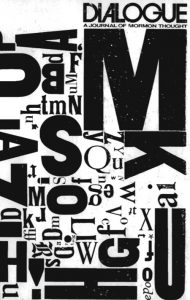 Dialogue: A Journal of Mormon Thought, then under the editorship of Mary Lythgoe Bradford, dedicated much of its Summer 1978 issue to publish most of the papers given at the October 1977 AML Conference, as well as papers given at a panel given under the auspices of the AML at the Rocky Mountain Modern Languages Association. The tradition of AML holding a panel at the RMMLA continued for at least the next 25 years.
Dialogue: A Journal of Mormon Thought, then under the editorship of Mary Lythgoe Bradford, dedicated much of its Summer 1978 issue to publish most of the papers given at the October 1977 AML Conference, as well as papers given at a panel given under the auspices of the AML at the Rocky Mountain Modern Languages Association. The tradition of AML holding a panel at the RMMLA continued for at least the next 25 years.
The Third Annual Symposium was held at the Marriott Library, University of Utah, on October 7, 1978. The program was as follows:
The Search for Self in Mormon Letters
- Maureen U. Beecher, The Diary and the Autobiography of Eliza Roxey Snow: A Study in Three Genres
- Lavina Fielding Anderson: The Identity Crisis in L.D.S. Missionary Fiction
- Davis Bitton, Utah’s Thoreau: Claude T. Barnes
Luncheon Speaker: Neal Lambert
The Mormon Novel, Folklore, and Moral Criticism
- William Wilson, “Folklore in The Giant Joshua“
- Richard Cracroft, “Samuel Taylor’s Heaven Knows Why“
- Stephen L. Tanner, “A Moral Approach to Literary Criticism”
Most of the papers were published in “Proceedings of the Symposia of the Association for Mormon Letters, 1978-1979,” a stand-alone booklet, edited by Steven P. Sodrup, and published in 1980. The third symposium was the first time the AML Awards were presented. Douglas H. Thayer and Donald Marshall were honored for their short stories, Linda Sillitoe and Arthur Henry King for their poetry, and Clifton Jolley for his critical writing.[9]
Other details about the first five years will have to wait until I visit the Utah Historical Society. In the meantime I will continue this series by covering the early 1980s next time.
AML presidents
| Name | Term | Notes |
| Maureen Ursenbach Beecher | 1976-1977 | Church History Department, BYU English |
| Neal E. Lambert | 1977-1978 | BYU English, American Studies |
| Richard J. Cummings | 1978-1979 | University of Utah French/Theatre |
| Eugene England | 1979-1980 | BYU English. d. 2001 |
| Levi Peterson | 1980-1982 | Weber State English |
| Lavina Fielding Anderson | 1982-1983 | Editor, author |
| Candadai Seshachari | 1983-1984 | Weber State English. d. 2015 |
| Edward A. Geary | 1984-1985 | BYU English |
| Edward L. Hart | 1985-1986 | BYU English. d. 2008 |
| John S. Tanner | 1986-1988 | BYU English |
| William A. Wilson | 1988-1989 | BYU English (folklore). d. 2016 |
| Levi Peterson | 1989-1990 | Weber State English |
| Bruce Jorgensen | 1990-1991 | BYU English |
| Richard Cracroft | 1991-1992 | BYU English. d. 2012 |
| Ann Edwards Cannon | 1992-1993 | Author, columnist |
| Linda Brummett | 1993-1994 | BYU bookstore |
| Susan Elizabeth Howe | 1994-1995 | BYU English |
| Robert M. Hogge | 1995-1996 | Weber State English |
| MaryJan Munger | 1996-1997 | BYU Studies |
| Neal W. Kramer | 1997-1999 | BYU English, BYU Studies |
| John Bennion | 1999-2000 | BYU English |
| Marilyn Brown | 2000-2001 | Author |
| Cherry Silver | 2001–2002 | Author, historian |
| Neila Sechachari | 2002 | Weber State English. President-elect; died before taking office |
| Gideon Burton | 2002–2004 | BYU English |
| Melissa Proffitt | 2004-2005 | Author |
| Kathleen Dalton-Woodbury | 2005-2006 | Acting President |
| Linda Hunter Adams | 2006-2007 | BYU Humanities, editor, d. 2016 |
| Eric Samuelsen | 2007–2009 | BYU Theater |
| Boyd J. Peterson | 2009-2010 | UVU Mormon Studies |
| Margaret Blair Young | 2010–2013 | BYU English |
| Glenn Gordon and Kathy Gordon | 2013–2014 | co-presidents, Musician, Covenant editor |
| Joe Plicka | 2014–2016 | BYU-Hawaii English |
| Sheldon Lawrence | 2016– | BYU-Idaho Writing Center |
[1] Richard H. Cracroft and Neal E. Lambert, eds., A Believing People: Literature of the Latter-day Saints Provo, Utah: Brigham Young University Press, 1974.
[2] Michael Austin. “Mormon Letters”. In The Oxford Handbook of Mormonism, edited by Terryl L. Givens and Phillip L. Barlow, University of Oxford Press, 2015, p. 487.
[3] “Introduction”. Proceedings of the Association for Mormon Letters. In Dialogue: A Journal of Mormon Thoughtˆ. XI:2, Summer 1978, p. 12.
[4] Lavina Fielding Anderson. “Tending the Garden with Eugene England”. Irreantum 3:3, Autumn 2001, p. 40-42. Anderson gives the organizational date as Fall 1976, but all other indications is that it occurred in April 1976.
[5] Private correspondence with the author.
[6] Association for Mormon Letters Records. 20th Century Western and Mormon Manuscripts; L. Tom Perry Special Collections. Box 1.
[7] ibid
[8] BYU Studies, Vol. 17, No. 2 (Winter 1977), pp. 254.
[9] Stephen P. Sondrup, “Mormon Letters”, Dialogue: A Journal of Mormon Thought. 11:6, p. 9.

Maureen Urnenbach Beecher, one of the founders and the first president of AML, worked at the Church History Department in the 1970s. Here is a post by Ben Park, based on Gregory Prince’s biography of Leonard Arrington, describing how Beecher was at the center of an effort to end the policy by which female Church workers were expected to end their employment once they had their first child.
https://professorpark.wordpress.com/2017/06/30/the-lds-churchs-parental-employment-policy-some-context/